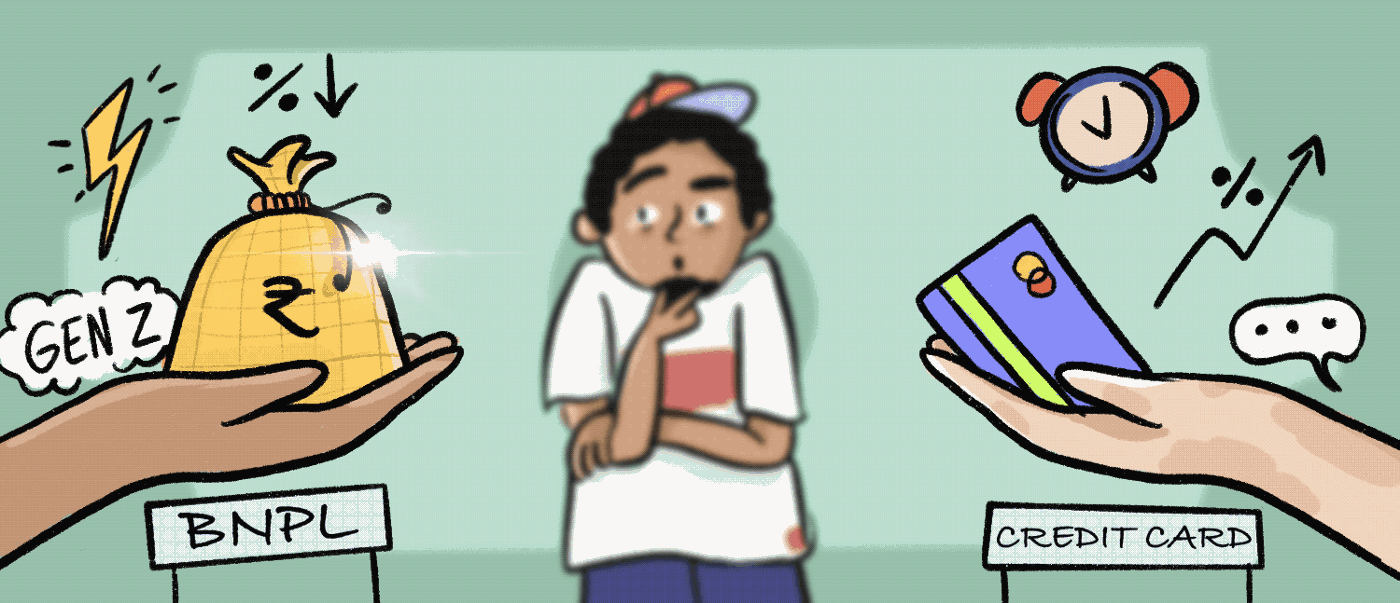In our previous 2 blogs (BNPL: The Modern-day Credit Card & BNPL: The Real Deal or Just Hype), we compared the buy now pay later model to traditional credit cards and looked at its market share, both globally and in India. While it is a viable alternative to credit cards, has gained a lot of worldwide traction, and is capturing a lot of market share, how does it work?
Operating Models
Buy now pay later has multiple operating models.
- EMI with interest
- EMI without interest
- Deferred payment model
- Down payment and loan model
- Hybrid model. Allows users to defer the down payment and the balance is converted to EMIs.
Model
EMI with interest
Here, the entire bill amount is converted to a loan.
- Interest rates vary between 12% — 36%.
- 2 months to 36 months loan term.
- EMI amount includes interest charged. EMI = (Principal + Interest)/Tenure.
EMI without interest
Here, companies refund the interest as a cashback to the customer or as a discount on the price of the product or service.
- Effective interest rate of 0%.
- Fixed or short-term loans (up to 12 months).
- EMI does not have an interest component. EMI= Principal/Tenure.
Deferred payment
Here, the bill amount is converted to a short-term loan, which the customer pays back to the company within a fixed duration (typically 15 or 30 days).
In this scenario, companies may charge the customer processing fees or convenience fees.
Down payment loan model
This is similar to traditional loans. A customer makes a purchase by making a downpayment and the balance amount is converted to EMIs.
Here, companies charge customers an interest, which is added to the EMI.
This is mostly used by companies such as Bajaj Finserv and Home Credit for offline transactions. Each transaction is treated as a separate loan and reflects in the customer’s CIBIL report.
Hybrid Model
This is a combination of the deferred payment and down payment loan model.
Customers can pay the entire bill amount back within a fixed duration or convert the amount to EMI.
Charges
Typically, companies do not charge customers registration fees or annual maintenance fees to use their buy now pay later product. This, however, does not mean that there are no charges when you make payments using the buy now pay later option.
Apart from interest, companies charge customers processing and convenience fees, among other fees. While these are lower than what traditional credit cards would charge you, they are not non-existent.
Fees
Interest on loan amount
Interest charged on the loan. Varies between 12% and 36% and it can go up to 66%.
The interest rate depends upon the company’s business model, total loan amount, product or service purchased, and loan tenure.
Processing fee
A fee is charged to process the transaction. Typically 0%. However, some companies might charge a small amount.
Convenience fees
A fee is charged to use the service. Varies from company to company.
For example, Paytm charges 0% — 3% on your net monthly spending.
Late fee
Fee charged when you miss your payments. This varies from company to company and the outstanding amount.
Interest on non-payment of minimum amount
The interest charged when you do not make the minimum monthly payment.
Varies from company to company. Could be between 18% and 36%.
Preclosure charges
Amount charged to close your loan early.
Varies from company to company. For example, LazyPay charges 4% of the outstanding amount when you close your loan early.
Revolve fees
Fee charged when you request for an extension on the due date. Varies from company to company.
When you request for an extension, you are not charged late fees or interest for missing your minimum monthly payment.
If granted, allows you to make payment at a later date without it being marked as a non-payment by the company and your CIBIL score is not affected.
Activation fees
Most companies do not charge you an activation fee. However, some do. For example, Mobikwik charges you a 1-time activation fee of ₹99.
Other fees
Some companies have others charges such as joining fees, subscription fees, annual charges, or EMI bounce charges.
For example, Dhani Pay has a subscription fee varying between ₹199 and ₹1,799 per month.
Companies such as Bajaj Finserv and Home Credit charge an annual fee of ₹99.
Future of Buy Now Pay Later
There has been an increased uptake for the buy now pay later model in the educational sector as well. School and college fees are not small payments, especially when they are paid quarterly or annually. The buy now pay later model has made it easier to make these payments.
UPI payments have made digital payments more accessible to everyone in India. The tea shop down the road and even your local barber accept UPI payments. Companies such as LazyPay have integrated buy now pay later with UPI to capitalize on the popularity of UPI and make buy now pay later more accessible.
Other companies such as Slice, ZestMoney, Mystro, Krazybee, and Lazypay are exploring new ways to offer buy now and pay later to customers. One such idea is to offer gift vouchers on EMI. Users can purchase gift vouchers of different amounts and different brands and pay for them using the buy now pay later method. This means financial institutions need not tie up with merchants to offer buy now pay later to their customers. This will make a popular product even more popular and more accessible.
Thank You

